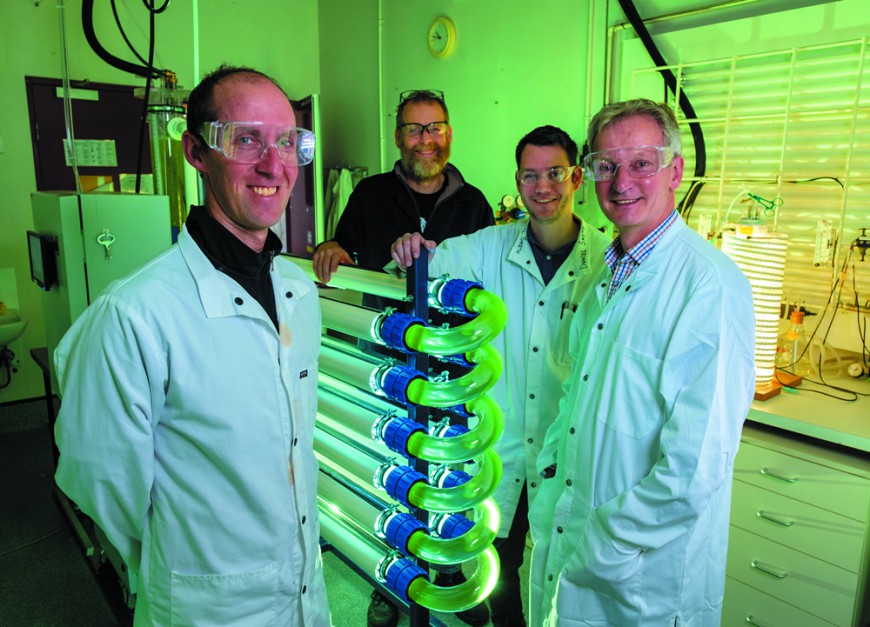
Manaaki Whenua phycologist Phil Novis (left) with University of Canterbury staff in the university’s CAPE algal lab
Lake snow can cause serious problems for homes and businesses, clogging municipal water infrastructure, water filters and boat engines, accumulating on fishing gear, and coating boat hulls and wetsuits. Regional councils increasingly need a cheap and reliable way to monitor and manage lake snow in areas increasingly economically dependent on tourists and recreational water users.
Until now this monitoring has been done using Raman spectroscopy, a technique to determine what molecules are present in a sample of a substance by studying the vibrational patterns of those molecules; for instance, when stimulated by laser light. However, most Raman spectroscopes are laboratory machines, unsuited to use in the field or aboard a boat.
Our researchers have developed a cost-effective, robust, laser-based Raman spectroscope that can be used in the field. It sends a laser beam into a water sample to identify instantly whether or not lake snow is present. The work builds on previous research done at Manaaki Whenua to extract DNA from the alga for genome sequencing and species identification, enabling us to identify the organism accurately.
